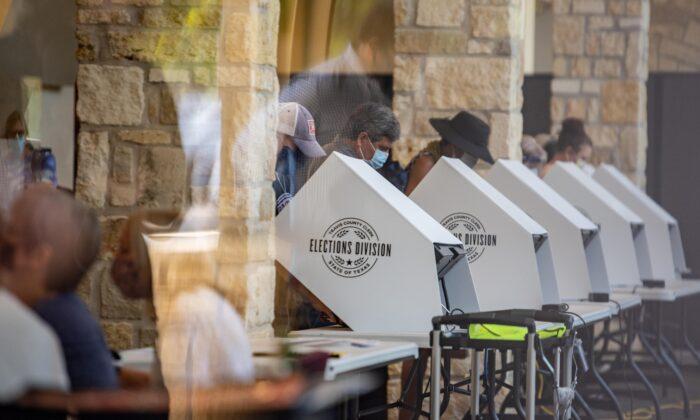Another state that has already surpassed its 2016 turnout is Hawaii, where more than 450,000 have voted so far. A number of other states are on the trajectory to surpass their 2016 totals before election day.
Montana is above 91 percent of its 2016 turnout; Tennessee is about to reach 90 percent; Washington is at 88 percent; New Mexico is almost at 88 percent; Georgia has nearly reached 87 percent; North Carolina is approaching 86 percent; Oregon, Nevada, and Florida are around 82 percent; and Arizona has broken 80 percent.
“Hawaii and Texas have already exceeded their 2016 total vote in their 2020 early vote alone. More states are on the verge of joining this club,” commented Michael McDonald, associate professor at the University of Florida and head of the U.S. Elections Project, in an email to The Epoch Times.
“This is the definitive point where we know that the early voting is not just a change of when people are voting, but a sign of higher turnout in these states and nationally.”
Almost 90 percent of the Texas votes were cast in person, the rest by mail. Hawaii instituted all-mail elections starting this year, meaning all registered voters are automatically mailed a ballot and everybody votes by mail.
Overall, more than 85 million Americans have already cast their ballots, compared to about 47 million who voted early in 2016.
McDonald has predicted 2020 will surpass the 61.6 percent turnout of the 1952 election, which marked the landslide victory of Republican Dwight Eisenhower.
If his prediction proves true, 2020 would see the largest turnout at least since the 1908 election of Republican Howard Taft, when 65.4 percent of eligible voters cast their ballots.
Democrats lead by a large margin in mail-in voting (15.4 million vs 8 million), while Republicans have an edge, albeit a much smaller one, in early voting in person (4.1 million vs 3.6 million), based on data from 20 states that report party affiliations.
Democrats get a major part of their mail ballot advantage from blue states that have either instituted all-mail elections or have sent mail-in ballots to all registered voters this year.






Friends Read Free